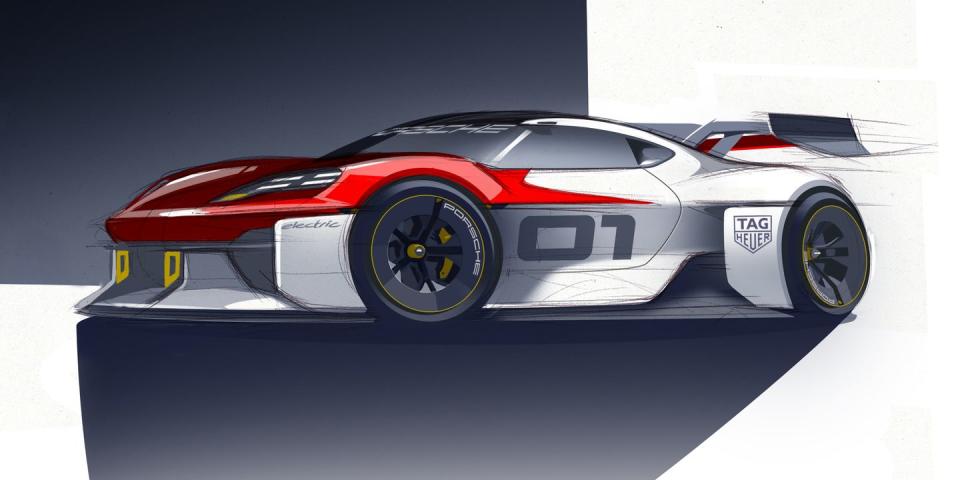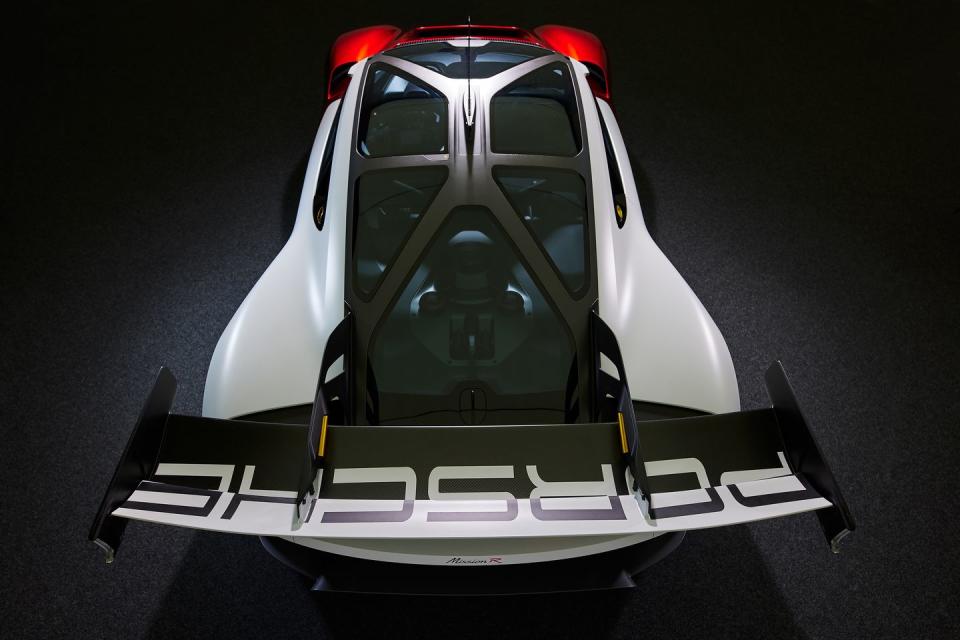What the Mission R Concept Tells Us About Porsche's Electric Future

As the head of Porsche's sports cars division, Dr. Frank Walliser has one of the most enviable jobs in the auto industry. He's responsible for two perennial sports-car benchmarks, the 718 and 911, and tasked with steering these models into an uncertain future. He's also a great person to chat with, and during a far-reaching conversation at the L.A. Auto Show, Walliser gave us a glimpse into the future of Porsche's icons.
Porsche is going electric. The Taycan is selling strongly, and an all-electric Macan is in the works. Earlier this year, the company also showed off the Mission R, a concept electric race car that bears a significant resemblance to the 718 Cayman. If you want a general idea of where the Boxster and Cayman are headed, check out the Mission R.
As head of Porsche's Motorsport department at the time, Walliser helped define the basic concept behind the Mission R four years ago. Since taking over the sports car division in 2019, he hasn't been directly involved with the Mission R, but he's thrilled with how it came out. "Just look at it," he says, with obvious pride.
Walliser says concept cars like this are a great way to inspire designers and engineers to find new innovations. "But this is not that futuristic," he points out. "A car can look like this. It's driving, it can go on the race track already. There is proof it can work. Maybe we could not afford one thing or the other, or it's difficult to get it into series production. But in general, it's not so visionary that you would say, 'this could never happen.'"

The Mission R eschews the typical EV "skateboard" layout of placing the batteries in the floor. Instead, the concept's 80-kWh lithium-ion batteries sit behind the driver, roughly where the internal-combustion engine lives in today's 718. In an interview with Autocar, Porsche R&D chief Michael Steiner explained the advantages of this "mid-battery" layout. Dr. Walliser explains the concept further.
"For a sports car, it's very important to have a low seating position," Walliser says. While a skateboard layout puts the weight of the batteries low in the chassis, the center of gravity rises as soon as a driver and passenger sit in the car. So while putting the batteries behind the driver might fly in the face of accepted practice, there's logic in the decision.
There's a fear among enthusiasts that, robbed of distinguishing powertrain characteristics, all EVs will largely feel the same. Walliser has some ideas for how to make an electric Porsche sports car feel unique. "We have different designs, different motors. We might have one, two, three or four motors in the car." And Walliser points out that, throughout automotive history, the industry has gravitated toward a few common layouts. For decades, the typical American car had a V-8 up front, an automatic gearbox, and rear-wheel drive. That didn't prevent other companies from trying different things. "Some guys even put a flat-six in the rear of the car. Crazy," he said.
And while Walliser is enthusiastic about Porsche's EV push, he's also a big proponent of the company's e-fuel initiative, capturing carbon dioxide out of the atmosphere and turning it into synthetic liquid hydrocarbons that can fuel conventional internal-combustion engines. Even with the momentum behind EVs right now, Walliser feels there will be plenty of older, internal-combustion cars on the road for many years, and they'll need a clean fuel source. "We're not talking about saving the 911," he says, "we are talking saving the planet." To Walliser, sustainability includes getting the most use out of the internal combustion cars that exist today, to offset the environmental impact that went into constructing them.
Walliser reminded us that, ultimately, Porsche is a very small automaker. "We are building maybe 40,000 911s [a year]. What is that? It's one day at GM, or Volkswagen, or Toyota," he said. (Overall, Porsche sells just under 300,000 vehicles a year worldwide, with the Cayenne and Macan making up the majority of that number.) Walliser recognizes Porsche's reputation for innovation, and he knows that the company's decisions carry weight throughout the industry. Building advanced sports cars while balancing environmental responsibility will continue to be the challenge that defines his role.
You Might Also Like

 Yahoo Autos
Yahoo Autos 